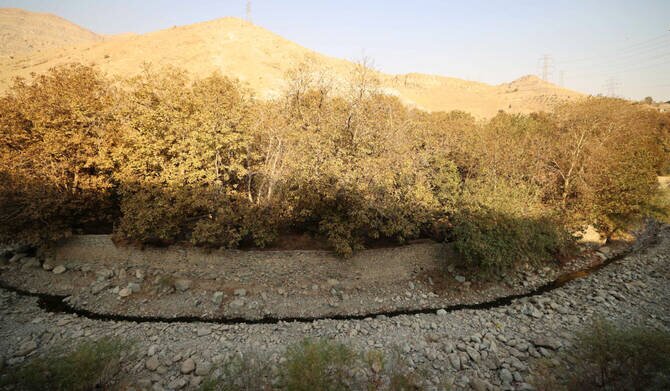
Water levels at dams in Iran's Mashhad city drop below three percent
The water storage in Mashhad's dams has now fallen to less than 3% as the country suffers from severe water shortages.
Tehran: Water levels at the dam reservoirs supplying Iran’s northeastern city of Mashhad have dropped below three percent, as the nation grapples with severe water shortages.
According to reports on Sunday, Hossein Esmaeilian, the chief executive of the water company in Iran's second-largest city by population, stated that the current water storage levels in Mashhad’s dams have fallen to less than 3%.
This situation highlights that managing water usage is now a necessity rather than just an option.Mashhad, with a population of approximately four million people, relies on four dams for its water supply.
Esmaeilian further elaborated that the consumption rate in the city has reached around 8,000 liters per second, out of which about 1,000 to 1,500 liters per second is supplied from the dams.
The authorities in Tehran have also issued warnings over the weekend regarding possible rolling water supply cuts in the capital due to what officials describe as the worst drought in decades.In Tehran, five major dams responsible for providing drinking water are at critical levels, with one completely dry and another at less than eight percent capacity, according to reports.
Esmaeilian suggested that if residents can reduce their consumption by 20%, it might be possible to manage the situation without implementing water rationing or shutting off supplies.
He also warned that individuals with the highest consumption rates could face supply cuts first.Nationwide, 19 major dams—representing about 10 percent of the country's reservoirs—have essentially dried up, as reported by Abbasali Keykhaei from the Iranian Water Resources Management Company in late October, according to Mehr news agency.
President Masoud Pezeshkian has cautioned that if there is no rainfall before winter, even Tehran could face evacuation, although he did not elaborate on this statement.The water crisis in Iran follows a month of drought across the country.
In response to the crisis, authorities over the summer announced public holidays in Tehran with the aim of reducing both water and energy consumption, as the capital experienced almost daily power outages during a heatwave.
Local papers criticized what they described as the politicization of environmental decision-making for the water crisis, citing the appointment of 'unqualified managers' to key positions as a major cause of the issue.
According to reports on Sunday, Hossein Esmaeilian, the chief executive of the water company in Iran's second-largest city by population, stated that the current water storage levels in Mashhad’s dams have fallen to less than 3%.
This situation highlights that managing water usage is now a necessity rather than just an option.Mashhad, with a population of approximately four million people, relies on four dams for its water supply.
Esmaeilian further elaborated that the consumption rate in the city has reached around 8,000 liters per second, out of which about 1,000 to 1,500 liters per second is supplied from the dams.
The authorities in Tehran have also issued warnings over the weekend regarding possible rolling water supply cuts in the capital due to what officials describe as the worst drought in decades.In Tehran, five major dams responsible for providing drinking water are at critical levels, with one completely dry and another at less than eight percent capacity, according to reports.
Esmaeilian suggested that if residents can reduce their consumption by 20%, it might be possible to manage the situation without implementing water rationing or shutting off supplies.
He also warned that individuals with the highest consumption rates could face supply cuts first.Nationwide, 19 major dams—representing about 10 percent of the country's reservoirs—have essentially dried up, as reported by Abbasali Keykhaei from the Iranian Water Resources Management Company in late October, according to Mehr news agency.
President Masoud Pezeshkian has cautioned that if there is no rainfall before winter, even Tehran could face evacuation, although he did not elaborate on this statement.The water crisis in Iran follows a month of drought across the country.
In response to the crisis, authorities over the summer announced public holidays in Tehran with the aim of reducing both water and energy consumption, as the capital experienced almost daily power outages during a heatwave.
Local papers criticized what they described as the politicization of environmental decision-making for the water crisis, citing the appointment of 'unqualified managers' to key positions as a major cause of the issue.